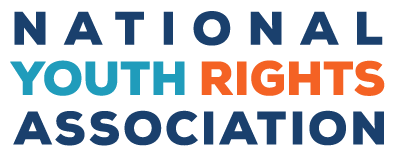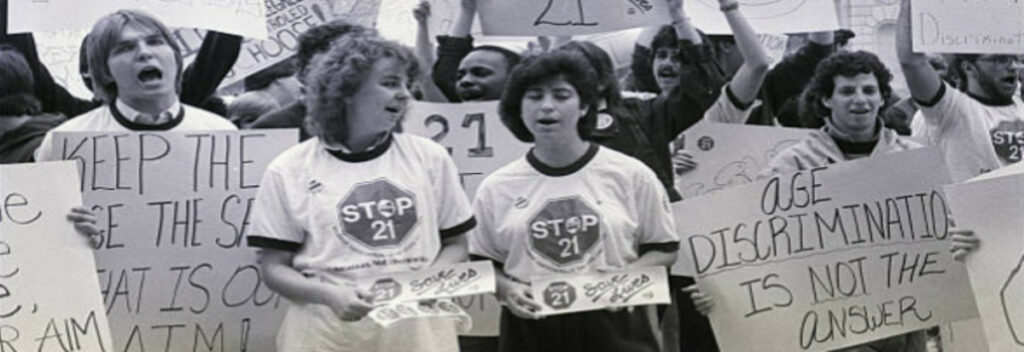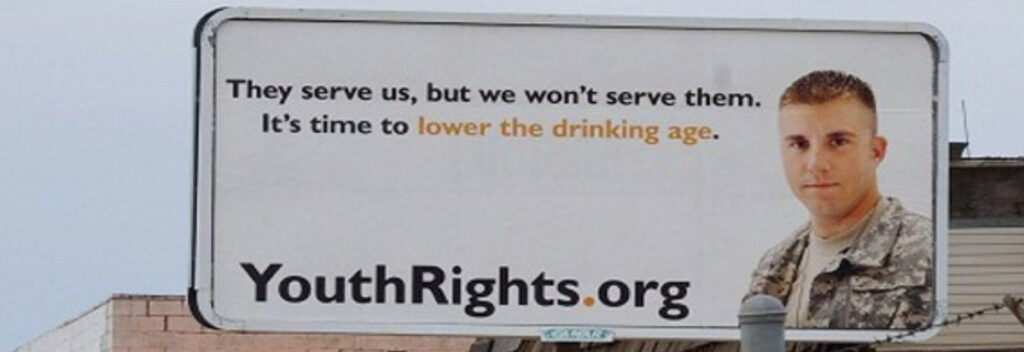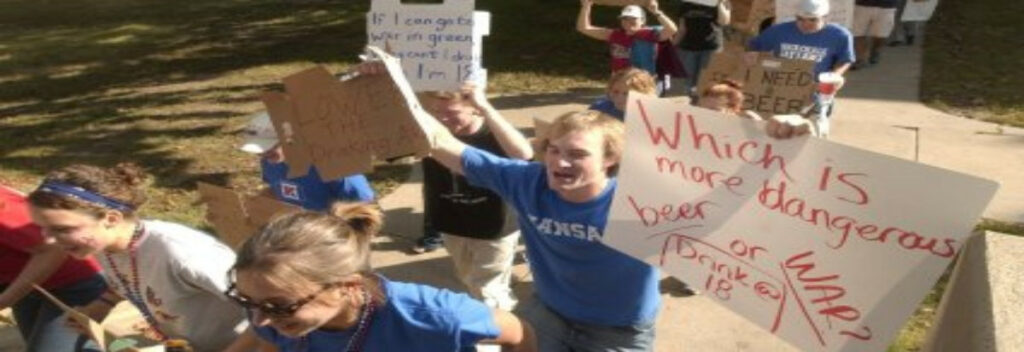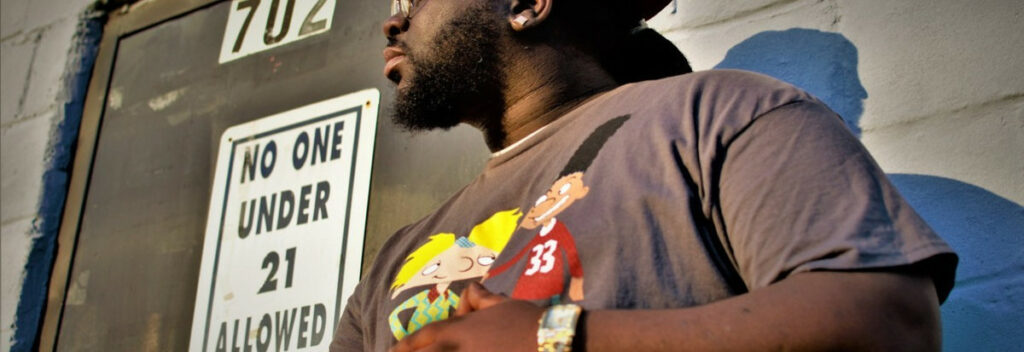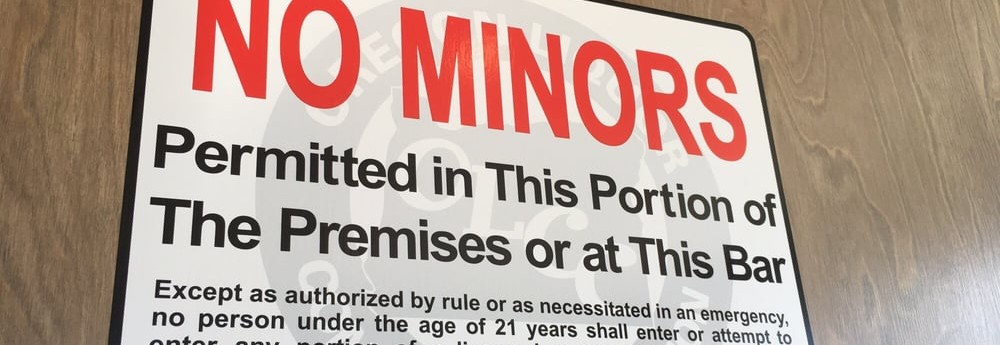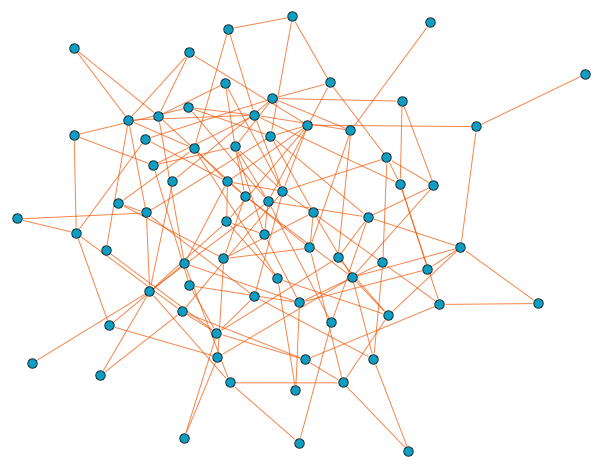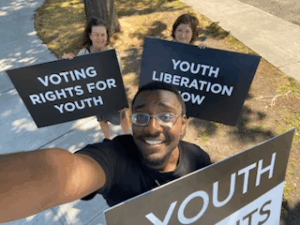There’s a lot of misinformation about the drinking age and it can be difficult to know what the facts are. For this reason, we’ve put together a list of talking points and references that you can use whether you are talking to your friends and family or your local legislator. We’ve also summarized some of the research that supports a lower drinking age or those who want a more in-depth analysis. And be sure to check out our Top Ten Reasons to Challenge the Drinking Age as well!
Drinking is less dangerous than other activities that you can do at 18.
- At 18, you can join the military, get married and raise a family, purchase a firearm, and serve on a jury—all of which require a significant amount of risk or responsibility. Strangely, though, alcohol is held to a different standard. Drinking alcohol is a serious activity, not to be engaged in without thought, but requiring a higher age to drink legally than activities that are either more dangerous or have a bigger impact on other people’s lives doesn’t make any sense.
- Tobacco is usually legal at 18, though many states have moved to raise it to 21, the same as the drinking age. However, smoking tobacco is still much more dangerous. Nicotine is arguably the most addictive drug people use. According to the CDC, smoking kills 1.3% of the smoking population each year. This makes tobacco over 20 times as deadly as alcohol, which only kills about 0.063% of the drinking population a year according to the CDC.
- Having sex requires far more physical and emotional maturity than drinking alcohol. Although the risks of sex do not primarily lie in the deaths it causes, sex does kill 36,000 people a year through STDs (and another 400 through pregnancy complications).
- Military service is more dangerous than drinking. Military service kills around 0.1% of the active duty population per year. This makes military service about 1.5 times as deadly as alcohol. And this is not even during a draft or a major war. During the Vietnam Era, the military death rate was 0.64%—10 times as deadly as alcohol (By the way, 61% of Vietnam deaths were soldiers younger than 21).
- Your first sip of alcohol cannot possibly kill you, and is unlikely even to get you drunk. However, your first tour of duty in the military, your first week of basic training, or even your first time firing a gun, can kill you.
- It is possible to stop drinking whenever you want to. This comes in very useful when the situation begins to feel unsafe. However, it is not possible to stop serving in the military or stop being a parent whenever you want to, even if you feel you can’t handle the risk or the responsibility. Alcohol does not have this problem. We would never put someone in a situation where they had to keep drinking, and could not stop even when people’s lives were in danger.
We didn’t need to raise the drinking age in order to reduce the number of alcohol-related traffic deaths.
- The law did not prevent traffic deaths, it only delayed them. In an unrefuted study, Peter Asch and David Levy showed that raising the drinking age merely transferred drunk driving deaths from the 18-20 age group to the 21-24 age group. They argued that the problem with saying that the drinking age has saved lives is that it looks only at deaths for people aged 18-20. Raising the drinking age may have reduced deaths among people 18-20 but resulted in more deaths among people 21-24. This suggests that the real risk factor for drinking and driving is being an inexperienced drinker, regardless of age. If 18-year-olds have just started drinking, a disproportionate number will die from drunk driving. The same thing is true of 21-year-olds. The researchers wrote, “…it seems clear that the means by which we now make alcoholic beverages available to the young—proscribing consumption up to an arbitrarily specified age, and allowing it from that moment on—is a policy of little use in promoting highway safety.”
- Drunk driving was decreasing among all age groups before the National Minimum Drinking Age Act was fully implemented. The National Highway Traffic Safety Administration has shown that between 1982 and 1987 there was a reduction in the number of accidents related to intoxicated drivers. The number of alcohol-related accidents was already dropping before the age restriction laws were in place.
- Drunk driving decreased in places with that didn’t increase the drinking age. According to the US Department of Transportation, Canada experienced almost the exact same reduction as the United States during the 1980s, without raising their drinking ages (18-19). This reduction in drunk driving also happened in states that have had a drinking age of 21 since the end of Prohibition. Raising the drinking age alone didn’t make a difference.
- The maximum Blood Alcohol Content level was lowered for everyone. Beginning in the 1970s and accelerating in the 1980s, states began lowering their legal maximum blood alcohol content for drivers, usually to 0.08%. Before this, the standard legal BAC was 0.1%, or even 0.15%. This new policy decreased the acceptable level of drunkenness for drivers, serving as a new deterrent for drunk driving among all age groups.
- Drunk driving became less socially acceptable. Organizations such as MADD caused a nationwide change in public opinion. Whereas previously, society had accepted drunk driving as a part of life, in the 1980s, people began to vilify drunk drivers. This could easily have deterred many people—including many young people—from drunk driving.
- It was a different generation. The people in their late teens and early 20s in the 1980s were the last members of the Baby Boom generation, and the earliest members of Generation X. The decrease in drunk driving was one of the many profound cultural changes that marked the transition from one generation to the next. These changes were already taking place before the drinking age was raised.
Other groups of people have a higher risk for alcohol problems, but their use is not restricted.
- Alcohol has many other risk groups that are not prohibited from drinking, including people with a history of alcoholism, pregnant women, and people previously convicted of alcohol-related crimes such as drunk driving, child abuse, and sexual assault. And yet aside from people under 21, all risk groups are allowed to drink. For example, let’s look at male drinkers.
- Men are a far more serious risk group than people under 21. They are 3 times as likely as women to die from alcohol, engage in drunk driving, reckless driving and commit seat belt violations. They are also twice as likely to be admitted to substance abuse treatment programs.
- Banning men from drinking could save lives. If the drinking age is supposed to save 900 lives a year, then by this same logic a law against men drinking would save far more lives. Like the drinking age, such a law would be hard to enforce. But if the government put the same amount of effort into enforcing restrictions on men’s drinking as it does into enforcing the drinking age, it would have a similar effect.
- The following chart shows the life-saving potential of a restriction on men’s drinking, if it had the same success rate people attribute to the restriction on underage drinking. Even if this policy had the same low success rate as the drinking age, it could save over 2 times as many lives on roads alone.
| Underage DUI | Male DUI | |
| Hypothetical deaths per year without the restriction | 2,900 | 6,700 |
| Actual deaths per year | 2,000 | 6,700 |
| Hypothetical % death reduction due to restriction | 31% | 31% |
| Hypothetical lives saved per year by restriction | 900 | 2,077 |
Numbers without a source are obtained by calculation.
- This is true even if we take different population sizes into account. Men make up about 50% of the population, whereas underage people make up about 25% of the population. This means that with a basic correction for population size, a law targeting men’s drinking would still save just as many lives per capita as our current law targeting underage drinking.
Countries with lower drinking ages have fewer alcohol-related problems.
- No other country has a higher drinking age. Other than the US, the only countries with a national minimum drinking age of 21 are Egypt, Indonesia, Kazakhstan, Oman, Sri Lanka, and Tonga. It is unusual for a country that prides itself on freedom and personal responsibility to be such an outlier.
- Australia, Canada, and New Zealand have nearly a mirror image history when it comes to alcohol. These countries also went through a Prohibition period and later set their drinking age at 21, which was the age of majority at the time. In the 1970s, like the United States, these countries lowered their drinking age as the age of majority was lowered to 18. These countries also have very similar stances on public health and safety, especially due to their high dependency on automobiles just like the United States, but never raised their drinking ages to 21. How can these countries, with their high standard of public safety and well-being, be able to consistently hold a drinking age of 18 or 19, and the United States cannot?
- Legal status of alcohol does not determine rates of liver cirrhosis deaths. Countries with more severe alcohol prohibition than the US have higher rates of death from liver cirrhosis—one of the main long-term consequences of alcohol use—than we do. These countries include Pakistan, Afghanistan, and India. Meanwhile, many countries across the world with easier access to alcohol than the US, such as Spain, Australia, Colombia, Japan, and Sweden, have lower rates of liver cirrhosis than we do.
Drunk driving is a serious problem – but not predominantly related to underage drinking.
- Many young people don’t drive. About 25% of people aged 18-21 do not have driver’s licenses, let alone cars (compared to 13% of the general population). An even larger number have licenses, but either choose not to drive or do not have opportunities to drive. This means that the drunk driving argument for the drinking age does not even apply to at least a quarter of the population aged 18-21.
- The law makes it easier to convict young people of DUI. For people over 21, getting convicted of DUI means they were driving drunk (BAC over 0.08%). But for people under 21, DUI only means that they had a measurable amount of alcohol in their blood (BAC over 0.00% or 0.02%). Many teenagers charged with DUI were arrested not because they were actually driving drunk, but because of their age.
- Alcohol-related does not mean alcohol-caused. We often hear this statistic: “Although drivers under the age of 21 represent 10 percent of licensed drivers they are responsible for 17 percent of fatal alcohol-related crashes.” But, “alcohol-related” does not mean “alcohol-caused.” In fact, in any number of these cases, it is possible that the driver was not drinking at all – accidents are classified as “alcohol-related” ”if at least one driver or nonoccupant (such as a pedestrian or pedalcyclist) involved in the crash is determined to have had a blood alcohol concentration (BAC) of .01 gram per deciliter (g/dL) or higher.” This way of classifying alcohol-related traffic accidents completely skews the results.
There are many negative consequences of current drinking age.
- Punishments for underage drinking cause harm.
- In many states, ANY consumption of alcohol can result in fines from $100 to $1000, probation, and suspension of driver’s license, regardless of the case. Many states will also require an alcohol and drug educational program, substance abuse prevention, diversion, and/or restitution. In 23 states, jail time can result from any under 21 drinking, from a few days to a year.
- In New York, licensees charged with sale to minors face penalties of up to $10,000 per violation, with fines starting from $2,500 to $3,000 for the first time offense. Anyone under 21 found to be using fake IDs or false documents can have their licenses revoked for a minimum of 90 days or up to one year.
- Some places are actually increasing penalties for underage drinking, such as Pennsylvania and the city of Miami. If we think punishment is the answer to underage drinking and the earlier you start drinking, the more dangerous it is, why are we punishing 20 year olds more severely that 17 year olds? In the state of Rhode Island, those aged 18-21 face the most serious repercussions for underage drinking (compared to those under 18).
- The drinking age causes problems similar to those of Prohibition. When individuals are obligated under Prohibition not to drink, drinking occurs in secrecy, with a lack of role models for responsible drinking. Young people, especially ones that are legal adults, are not going to stop consuming alcohol, even with the current strict laws we have now, so we need education and policies that teach responsible drinking habits and allow for moderate drinking.
- If people are allowed to gather together at a bar, bartenders can stop serving drunken patrons, call cabs, and make sure there are “designated drivers.”
- In addition, the high legal age here in the US has many of the same effects as Prohibition, including increased over-indulgence, anti-social behavior, drinking in secret. “For an entire class of people, it’s the Roaring Twenties all over again.”
- The drinking age implements a system of segregation. When going out with friends the drinking age drives a wedge between friends over and under 21. Often they are unable to hang out at the same places. It also does not make sense for adults to be denied entrance to establishments that serve alcohol, be denied employment in a variety of industries and venues, or suffer under a system of segregation that treats them as second-class citizens. Adults under 21 are segregated, sometimes prohibited entirely from bars, nightclubs, certain restaurants, and liquor stores. The drinking age takes economic opportunities away from young people.
- The drinking age affects the jobs that younger people can get. In 2014, the alcoholic beverage industry accounted for $450 billion in total U.S. economic activity, $110 billion in wages, and nearly 4.6 million jobs for U.S. workers. There are over 600,000 bartenders in the country, earning a median income of $20,800 yearly, not including tips. And yet in many states, those under 21 can’t bartend. Small businesses that produce alcohol are a growing trend among millennials. However, those aged 18-20 either can’t partake in this popular venture or be an equal counterpart in the industry.
- Young people are punished just for trying to lessen the potential damage of drinking. People under 21 who try to serve as designated drivers can be charged merely for being at a party where alcohol is served. Taxi services that give free rides to prevent drunk driving during the holidays ban young people from using their services.
The drinking age prevents parents from teaching healthy drinking habits.
- At age 18, young people are more likely to be living at home, where parents can set a good example for moderate use. By the age of 21, people are are more likely to be living on their own and are less likely to have role models to demonstrate moderate drinking habits. This can lead to excessive binge drinking, which is most predominant among individuals below the legal age.
- Adults who supervise a party with alcohol to prevent drunk driving can be charged for allowing other people’s children to drink in their homes. Parents can face extremely harsh consequences such as jail time or losing custody of their children, their job, or professional license.
The National Minimum Drinking Age Act (NMDAA) may not even be legal.
- The Supreme Court of Louisiana ruled the drinking age of 21 violated the Louisiana Constitution. In the case of Manuel v. Louisiana (Louisiana Supreme Court, 1996), the court decided that a drinking age of 21 “discriminates on the basis of age” and it wasn’t until the court faced pressure from advocacy groups and the federal government that the court reversed this decision.
- The federal government forced states to raise their drinking age by threatening to cut their federal funding. Congress threatened to withhold federal highway funding from states unless they raised their state drinking ages to 21.
- There are limits on how much the federal government can use removal of funds to coerce states into action. In National Federation Of Independent Business et al. v. Sebelius (U.S.Supreme Court, 2012), the Supreme Court concluded that the federal government cannot threaten to withhold Medicaid funding from states that do not comply with the Affordable Care Act. According to the Court, the main difference between the Affordable Care Act (ruled coercive) and the NMDAA (ruled not coercive) was the amount of money Congress threatened to take away from states.
- The NMDAA was also challenged for being unconstitutional. In South Dakota v. Dole (U.S. Supreme Court, 1987), the Supreme Court upheld the constitutionality of the NMDAA. However, the dissenting opinion, written by Justice O’Connor, the following points were made:
- The legal drinking age has nothing to do with highway safety. Justice O’Connor: “the establishment of a minimum drinking of 21 is not sufficiently related to interstate highway construction to justify so conditioning funds appropriated for that purpose.”
- The drinking age law doesn’t address the problem of drunk-driving and it unnecessarily curtails the rights of some people. Justice O’Connor: “…if the purpose of [the drinking age act] is to deter drunken driving, it is far too over- and under-inclusive. It is over-inclusive because it stops teenagers from drinking even when they are not about to drive on interstate highways. It is under-inclusive because teenagers pose only a small part of the drunken driving problem in this Nation.”
- The Twenty-first Amendment gave states, not the federal government, the right to regulate alcohol sales. O’Connor defined the NMDAA as “an attempt to regulate the sale of liquor, an attempt that lies outside Congress’ power to regulate commerce because it falls within the ambit of 2 of the Twenty-first Amendment.”
- Congress cannot “impose or change regulations in other areas of the State’s social and economic life because of an attenuated or tangential relationship to highway use or safety.”
List of of people and organizations that are critical of the current drinking age
Organizations
People
Mary Kate Cary, former White House speechwriter and political commentator
Pete Coors, former chairman of Coors Brewing Company
David J. Hanson, Ph.D, Professor Emeritus of Sociology of the SUNY Potsdam
Gary Johnson, former Libertarian Presidential candidate and governor of New Mexico
John McCardell, former President of Middlebury, founder of Choose Responsibility
Jeffrey Miron, Professor, Harvard University
Papers and Reports
- Does the Minimum Drinking Age Affect Traffic Fatalities? Economists Peter Asch and David Levy studied the incidents of traffic fatalities after the minimum drinking age was raised and concluded that the legal drinking age had “no perceptible influence on fatalities.” A summary of this study is available here.
- Does the Minimum Legal Drinking Age Save Lives? Harvard professor Jeffrey A. Miron and attorney Elina Tetelbaum argue against a drinking age of 21 and show that it “fails to have the fatality-reducing effects” that other papers have reported.
- The Minimum Purchase Age for Alcohol and Young-Driver Fatal Crashes: A Long-Term View Sociologist Mike Males takes a critical look at the National Minimum Drinking Age Act by pointing out to the flaws in research that suggested that raising the drinking age would decrease drunk driving incidents.
- The true effect of MLDA reform: An analysis of the mortality displacement in youth traffic accidents caused by the drinking age reform of the 1980s This paper looks at the differing points of view over the effectiveness of the 21 drinking age.
- Young Driver Fatalities: The Roles of Drinking Age and Drinking Experience Economists Peter Asch and David Levy take another look at the extent to which age is a factor in drunk driving incidents. They argue that the safety effects of raising the drinking age are overstated and therefore focusing on a higher drinking age is misdirected and that it would be better to focus on alcohol consumption more generally.
Quotes
“It is the single most regrettable decision of my entire professional career.” –Dr. Morris Chafetz, appointee to the Presidential Commission on Drunk Driving who helped to raise the drinking age.
“Prohibition… goes beyond the bounds of reason in that it attempts to control a man’s appetite by legislation and makes a crime out of things that are not crimes… A prohibition law strikes a blow at the very principles upon which our government was founded.” – Abraham Lincoln
